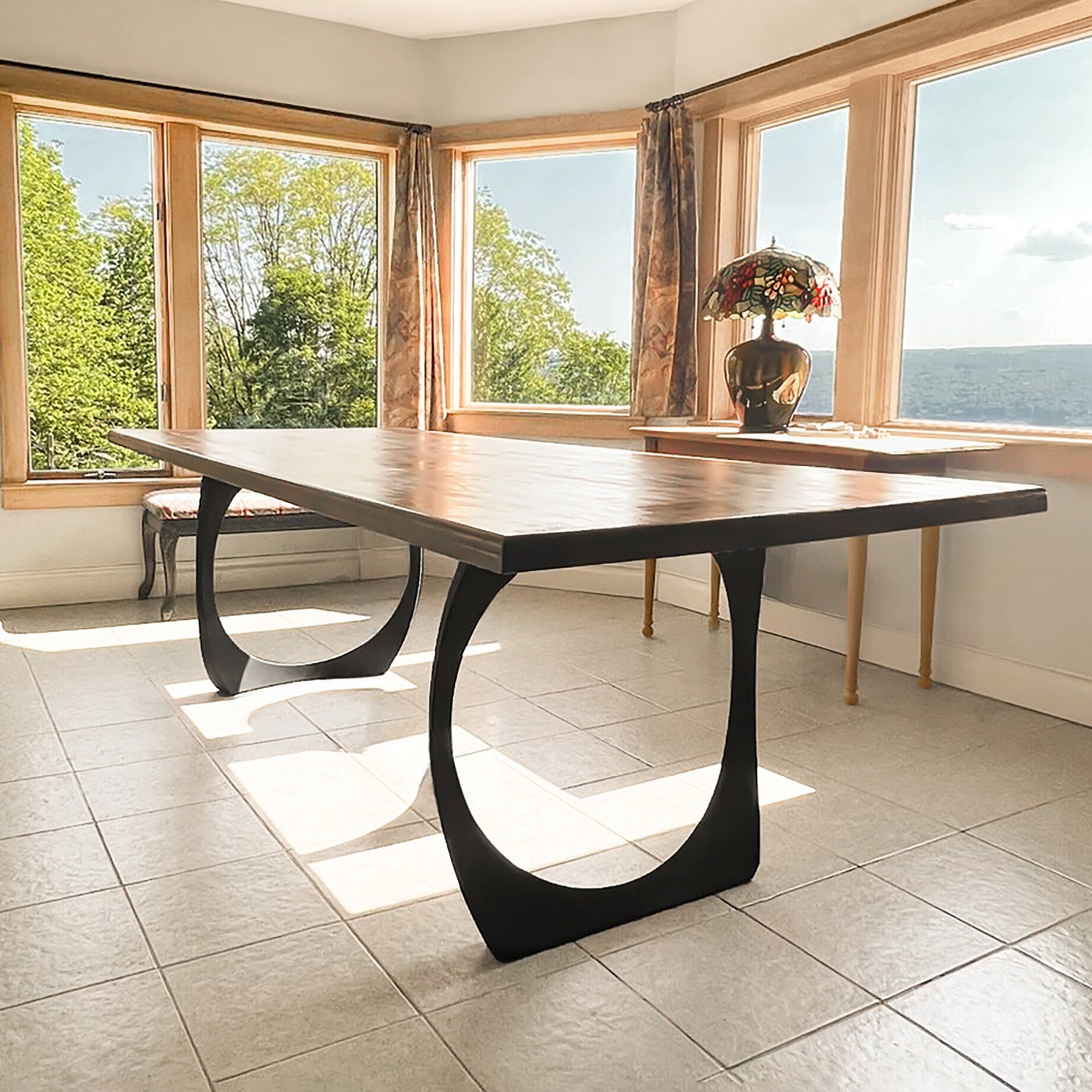Discover the Best Materials for Dining Room Table Legs for Every Style
Discover the Best Materials for Dining Room Table Legs for Every Style
Blog Article
A Thorough Take A Look At Eating Table Leg Styles: Locating the Perfect Match
Picking the best dining table leg design is critical for both aesthetic appeal and practical capability. Typical 4 legs provide timeless beauty and stability, while the stand base offers increased legroom and a modern-day look. For those with larger tables, trestle legs make certain tough assistance, whereas barrette legs introduce a mid-century modern-day vibe with their minimal design. The x-shaped legs mix contemporary design with improved security. Each of these choices brings unique advantages, making the choice greater than simply a matter of choice. Check out further to uncover which style flawlessly complements your eating space and lifestyle.
Conventional 4 Legs
Among the numerous kinds of eating table leg designs, the standard four-leg layout continues to be a classic selection for several families. 4 legs offer balanced support, ensuring the table stays steady and capable of bearing significant weight (dining room table legs).
From a visual point of view, the conventional four-leg design can be easily adjusted to different indoor styles. Whether crafted from wood, steel, or a mix of materials, these legs can be intricately sculpted, smooth and minimalistic, or anything in between. Their flexibility allows them to enhance both rustic and modern settings seamlessly.
In addition, the simple structure of the four-leg layout assists in simplicity of movement and positioning within a space. Unlike more facility bases, this style minimizes blockages, offering ample legroom for restaurants. In summary, the traditional four-leg eating table leg style weds enduring style with functional capability, making it a sharp selection for those looking for both kind and function in their eating furniture.
Pedestal Base
Usually celebrated for its elegant and space-efficient style, the stand base is a recognized alternative to the traditional four-leg setup in table leg styles. This distinct base generally includes a single main column supporting the tabletop, which can differ in form, from ornately carved timber to smooth, contemporary steel. One of the key advantages of the pedestal base is its capability to make the most of legroom and seating flexibility. Without edge legs, restaurants are afforded higher liberty of movement, making it an excellent option for round and oblong tables that advertise even more intimate and inclusive events.
The main column itself supplies a canvas for detailed layouts and imaginative expressions, adding an element of aesthetic rate of interest beneath the table. In recap, the stand base combines capability with design, making it a refined and sensible choice for diverse dining settings.
Trestle Legs
Trestle legs supply a robust and classic foundation for eating tables, defined by their horizontal cross-bracing and tough support light beams. Originating from middle ages times, this style has progressed yet kept its important framework, making it a perennial fave in both traditional and modern settings. The central trestle light beam, usually supported by 2 or more vertical articles, offers outstanding stability, permitting larger table sizes without the requirement for extra legs.
A substantial advantage of trestle leg tables is the adequate legroom they offer. Unlike tables with four corner legs, the lack of obstructions at the table's edges gives unimpeded area for chairs and restaurants, enhancing convenience and ease of access. This makes trestle tables excellent for webpage fitting bigger celebrations, whether in a dining-room or a banquet hall.
The visual flexibility of trestle legs is notable. Readily available in a variety of materials such as wood, metal, and composite, they can be completed to enhance a wide variety of indoor designs. From rustic farmhouse to streamlined contemporary layouts, trestle legs can be tailored to suit individual tastes. Their enduring charm and practical benefits make trestle legs a compelling option for those seeking both design and usefulness in their eating table.
Hairpin Legs

The charm of hairpin legs exists in their simplicity and convenience - dining room table legs. Available in a series of products, including steel and brass, they can be completed in numerous colors to match various interior styles. Whether matched with a rustic wood table top or a contemporary glass surface, barrette legs easily blend functionality with a touch of classic charm
Toughness is an additional noteworthy function of barrette legs. Regardless of their delicate look, these legs are why not try here crafted to birth substantial weight, guaranteeing the dining table stays secure and safe and secure. Additionally, they are relatively simple to set up, making them a prominent selection for do it yourself fanatics and expert furniture makers alike.
X-Shaped Legs

Created from products such as steel, wood, or a combination of both, X-shaped legs can be tailored to match numerous design choices. Steel legs frequently provide a streamlined and commercial feeling, ideal for loft-style houses and contemporary eating spaces.
Furthermore, the engineering behind X-shaped legs makes sure also weight circulation, decreasing the threat of wobbling and enhancing resilience. This makes them specifically appropriate for larger eating tables that require extra support. Basically, X-shaped legs blend practical engineering with modern looks, making them a classic selection for varied eating settings.
Verdict
An extensive understanding of eating table leg designs reveals the distinctive features and benefits of each layout. Trestle legs make certain durable support for bigger tables, and hairpin legs present a mid-century contemporary aesthetic.
Report this page